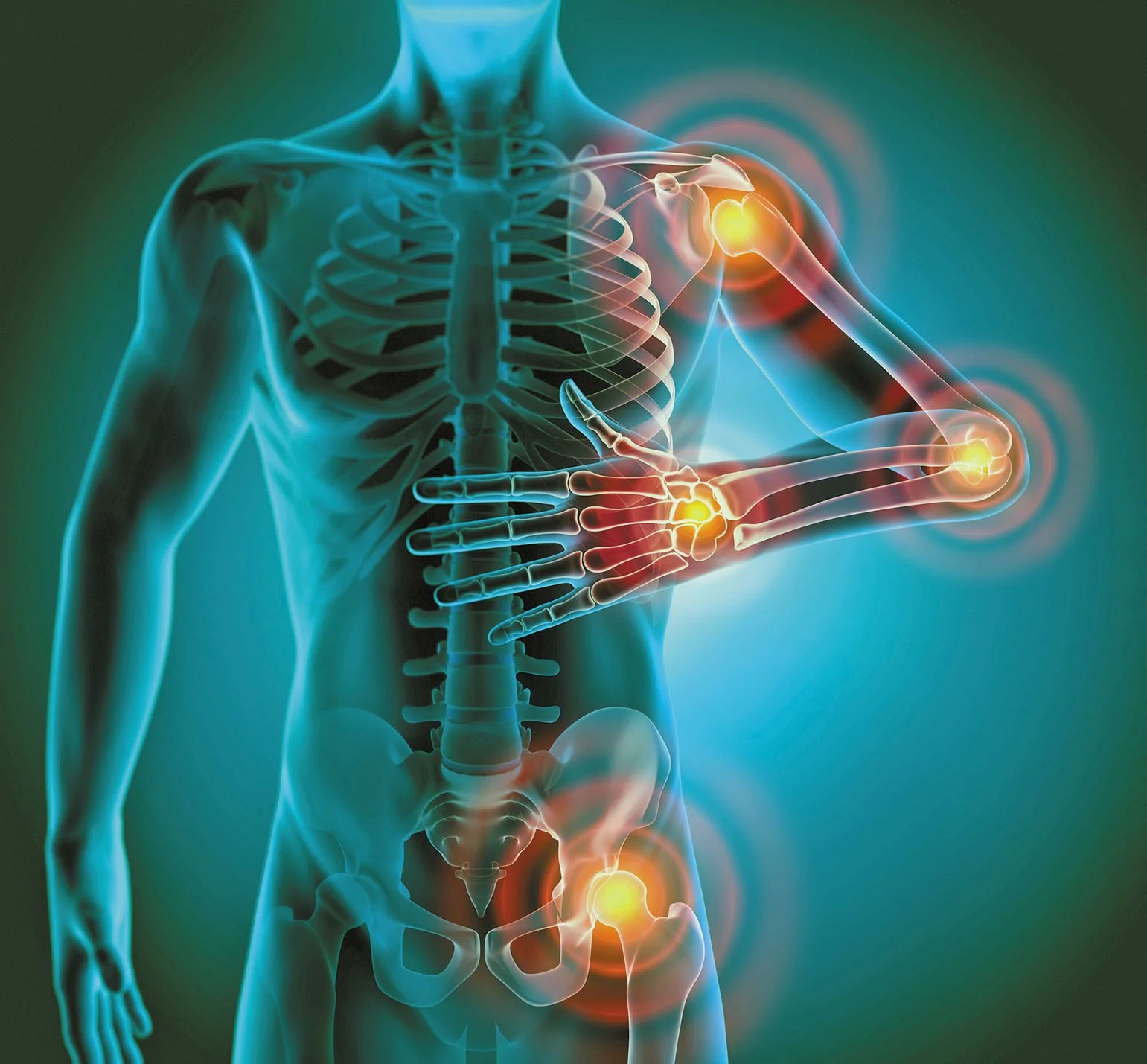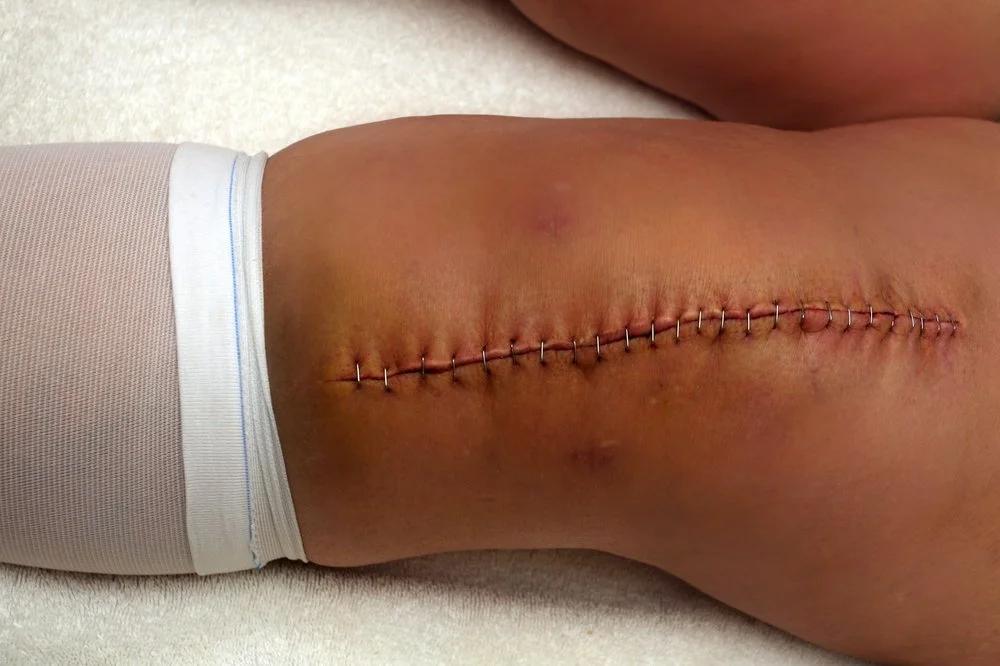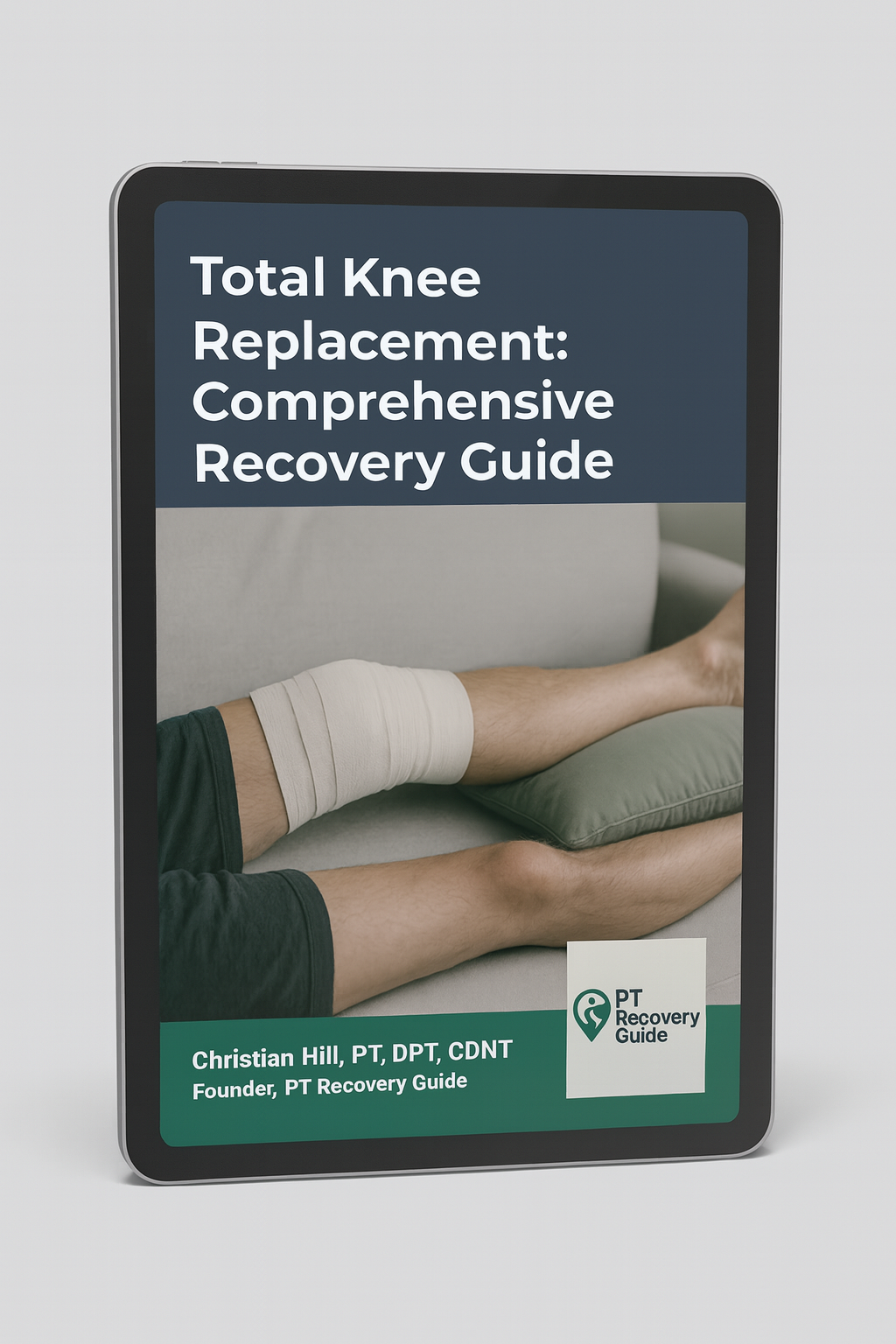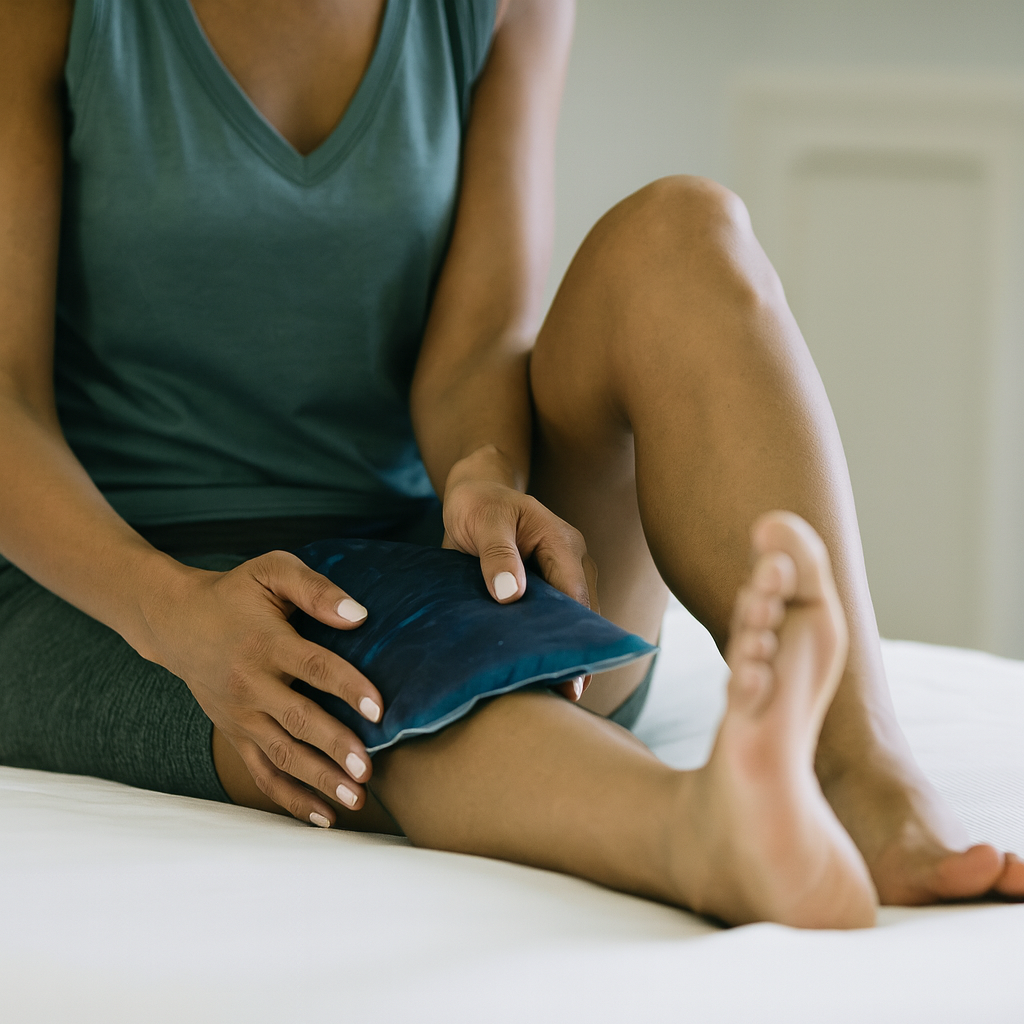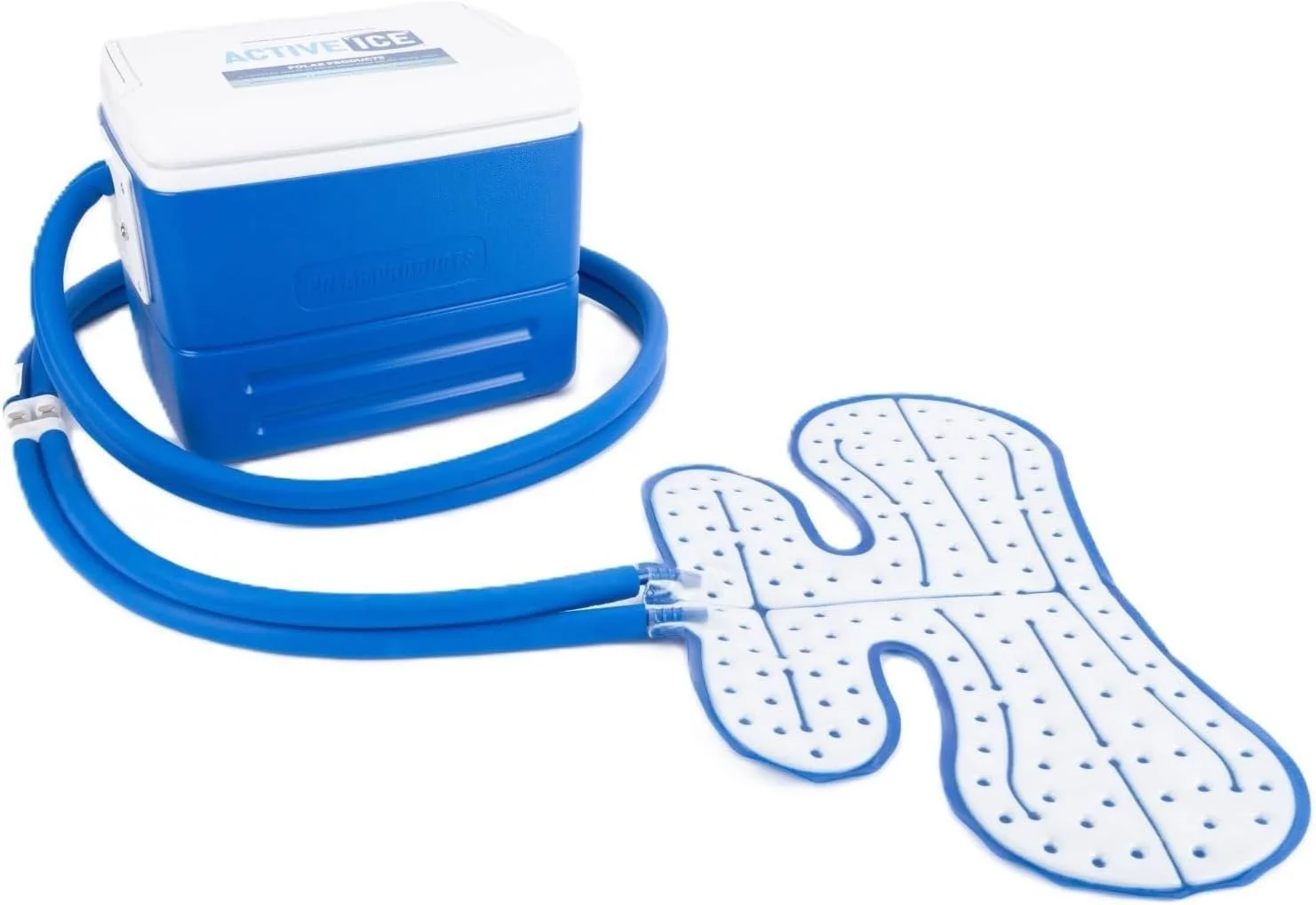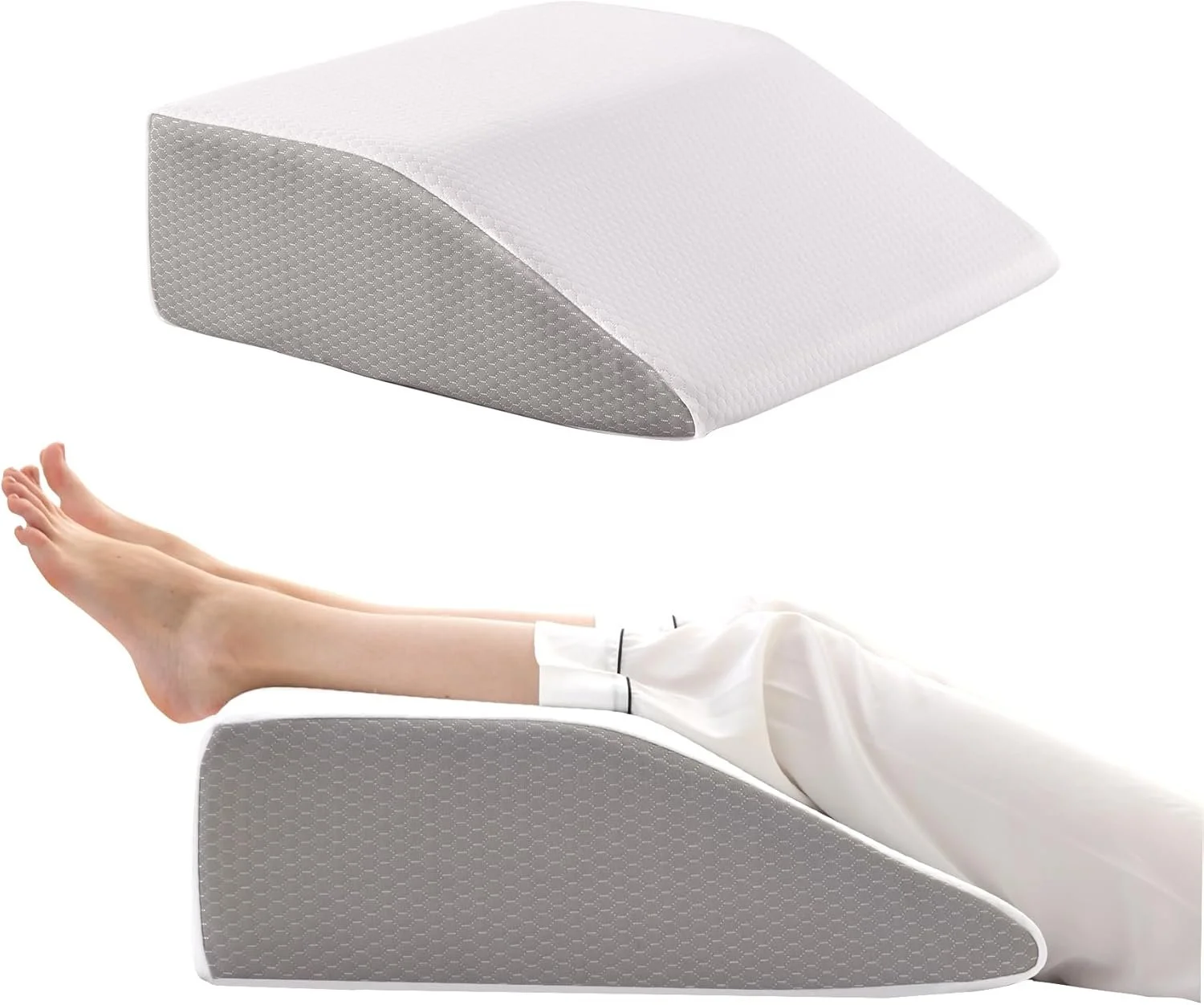TKA Resource Hub
Your Go-To Resource for TKA Preparation and Recovery
Take Control of Your Knee Replacement Recovery
Evidence-based strategies from a physical therapist to help you prepare, recover, and thrive after total knee replacement.
Over 15 years of orthopedic rehab experience — trusted by thousands of patients nationwide.
Knee replacement is one of the most common surgeries performed today — but recovery can be confusing and filled with mixed advice. This hub brings together clear, practical guidance from a physical therapist so you know what to expect before and after surgery.
Trusted by patients recovering from TKA, these articles will help you:
Understand what’s normal (and what’s not)
Progress your exercises safely
Avoid common pitfalls that delay recovery
Content Library
Pre-Surgery Preparation (Prehab)
🦵 Prehab Before Knee Replacement: How to Prepare Your Body and Mind for Surgery
Learn how pre-surgery strengthening and planning can make your recovery faster and less stressful.
Understanding Inflammation: How to Heal Smarter, Not Just Harder
What inflammation means for your recovery, why it lingers, and proven ways to reduce it naturally.
Preparing for surgery? Set yourself up for a smoother recovery with two free PT-designed tools — a Pre-Surgery Checklist and Exercise Tracker.
Early Recovery (Weeks 0-4)
What No One Tells You About Knee Replacement Recovery (TKA Recovery Weeks 0-4)
A candid look at the realities of the first few weeks and what patients often wish they knew earlier.
Sleep After Surgery: Why It Matters and How to Improve It
Tips and positioning strategies to finally get comfortable rest after your knee replacement.
Knee Stiffness After Knee Replacement: What It Really Means and How to Get Past It
Discover why stiffness happens after knee replacement, how to tell the difference between swelling, tightness, and scar tissue, and what movements help you regain mobility safely.
Track your recovery like a pro. Get two free tools — a Knee Recovery Tracker and Daily Inflammation Checklist — designed by a licensed PT to help you heal smarter.
Building Strength (Weeks 5-12)
TKA Recovery Months 2–3: What to Expect and How to Keep Making Progress
Guidance on regaining stamina, handling setbacks, and moving forward during the middle phase of rehab.
How Long Does It Take to Walk Normally After Knee Replacement?
Learn how to safely rebuild your walking pattern after knee replacement—with timelines, practical tips, and a free walking tracker to help you measure real progress.
Rehab Exercise Progression: A Patient’s Guide to Safely Advancing Your Recovery
How to know when to increase intensity and safely move from basic to advanced exercises.
Why Going Down Stairs is Harder After Knee Replacement
The biomechanics behind stair difficulty and how to improve strength and control.
What to Expect After Knee Replacement: Outcomes, Satisfaction, and Key Factors That Shape Recovery
What the research shows about long-term results, function, and patient satisfaction.
Long-Term Success (3+ Months)
Take the guesswork out of recovery
This therapist-designed guide takes the uncertainty out of recovery, walking you step-by-step through every stage after knee replacement—from early mobility and swelling control to rebuilding strength and confidence.
Includes detailed exercise progressions, week-by-week timelines, and practical strategies used in real clinics.
Instant digital download — no login required
Related Recovery Topics:
Research Summaries (For Patients Who Want the Evidence)
Recommended Recovery Essentials
These simple, therapist-vetted tools can make recovery smoother, safer, and more effective. Each is selected for clinical usefulness, quality, and value—available directly through Amazon for your convenience.
A simple but incredibly effective rehab strap that helps you stretch safely, improve mobility, and regain independence after surgery or injury.
FlexiKold Gel Soft Flexible Ice Packs
This durable ice pack stays soft and flexible while delivering long-lasting cold—ideal for calming swelling and soreness after surgery or activity.
Polar Active Ice 3.0 – Cold Therapy Machine
If your budget allows, this is the gold-standard cold therapy device—clinic-grade cooling that stays consistent for hours without the hassle of refreezing packs.
An affordable, clinic-style leg wedge that reduces swelling, boosts circulation, and keeps you comfortable for long stretches after surgery.
A simple, sturdy shower chair that adds instant safety and comfort during recovery—especially helpful for anyone with limited balance or post-surgical fatigue.
Interested in other highly rated tools for recovery? Visit the Recommended Supplies page for a full list of therapist-vetted products that make recovery smoother and more comfortable.
Knee Replacement Recovery FAQs: Answers from a Physical Therapist
Common recovery questions from real patients, answered by a physical therapist.
-
Most people begin walking with a walker or cane within a few days of surgery and progress to walking more independently by 4–6 weeks. Normal walking patterns usually return between 8–12 weeks, depending on strength, swelling, and confidence. Staying consistent with daily movement and following your physical therapist’s guidance helps retrain your gait faster and prevent stiffness.
-
The toughest stage is typically the first few weeks, when pain, swelling, and limited motion make basic activities challenging. Sleep disruption is common, and progress can feel slow. The key is steady effort—gentle mobility, proper pain control, and balanced rest—rather than pushing too hard too soon. Recovery accelerates significantly after the first month.
-
For the first 2–3 weeks, apply ice for 20–30 minutes several times per day, especially after exercises or therapy sessions. After the early phase, use ice as needed for soreness or swelling. Keeping the knee slightly elevated during icing improves circulation and helps fluid drain more effectively. Icing can be a very effective pain and inflammation modality.
-
You’ll usually begin practicing stairs with your physical therapist within the first week or two, starting with a handrail and assistive device. Most patients regain the strength and coordination for full stair use by 6–10 weeks. Strong quadriceps and good balance are essential for safely descending stairs.
-
Formal physical therapy typically occurs two to three times per week during the first six to eight weeks after surgery. Home exercises should supplement clinic sessions on non-therapy days. Consistency between visits is the most important factor in regaining flexibility, strength, and endurance.
-
For right-leg surgery, driving is usually safe between 4–6 weeks, once you can brake and accelerate quickly without pain or hesitation. For the left leg, you may drive sooner if you have an automatic vehicle. Always confirm clearance with your surgeon or therapist before resuming driving.
-
By three months, swelling and pain have typically improved, walking distance increases, and most patients resume regular daily activities. Some stiffness or mild discomfort can persist, especially after prolonged sitting or heavy use. Continued strengthening and stretching help you move toward full function.
-
The fastest recoveries come from consistency—not intensity. Follow your rehab plan closely, move daily, fuel your body with balanced nutrition, and prioritize sleep. Avoid “boom-and-bust” cycles of overactivity that increase swelling. Patients who follow structured recovery programs often return to normal function weeks sooner.
Take Control of your Recovery
The Comprehensive Total Knee Replacement Recovery Guide combines clinical insight, structured milestones, and practical advice— helping you move from surgery to strength with clarity and confidence.
Recovery is more than just exercise. This 68 page digital guide helps you stay organized, track progress, and avoid common pitfalls. All based on real clinical expereince.
✅ Clear phase-by-phase breakdowns (Weeks 0-12)
✅ Milestones and progress trackers for every stage
✅ Practical, evidence-based recovery strategies
✅ Written by a licensed physical therapist
Instant digital download - No subscription required
Created by a licensed physical therapist · 10+ years of clinical experience · Trusted by post-surgical patients nationwide| Organization | Resource | Description |
|---|---|---|
| AAOS | Total Knee Replacement Information | Comprehensive overview of surgery, rehab phases, and patient FAQs from orthopedic surgeons. |
| APTA | Physical Therapy and Joint Replacement Recovery | Evidence-based guidance on how physical therapy supports recovery after joint replacement. |
| Arthritis Foundation | Living with Knee Osteoarthritis | Lifestyle and exercise tips for managing arthritis symptoms before and after surgery. |
| AAHKS | Knee Replacement Patient Resources | Educational materials on surgical expectations, pain management, and long-term recovery. |
| NIAMS | Knee Joint Health and Research | NIH-backed research summaries on arthritis, joint health, and treatment options. |
| CDC | Physical Activity for Arthritis Management | National recommendations on exercise and movement safety for arthritis and recovery. |
*These external resources are not affiliated with PT Recovery Guide but represent credible, evidence-based organizations aligned with our mission to empower patient recovery.*
Additional Resources for Trusted Knee Replacement Information
Explore reliable, evidence-based organizations that provide expert guidance on total knee replacement and long-term joint health.
Set Yourself Up for a Strong Recovery
Before surgery is the best time to prepare. Get two free PT-designed tools that help you feel confident, organized, and ready for success:
✅Pre-surgery Checklist: simplify your setup and reduce last-minute stress
✅Exercise Tracker: build strength and mobility safely perform your operation
No spam or login. Just practical tools delivered straight to your inbox.
Stay On Track After Surgery
Your recovery doesn’t have to be guesswork. Get two free PT-designed tools that help you monitor your progress and manage inflammation during every stage of recovery:
✅ Knee Recovery Tracker: log pain, swelling, and mobility to see your progress unfold week by week
✅ Daily Inflammation Checklist: follow simple daily habits that support faster, healthier healing
No spam or sign-in required — just evidence-based tools from a licensed PT to guide your recovery.


